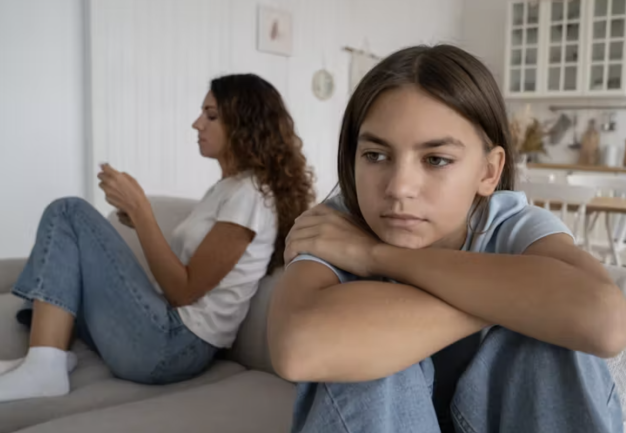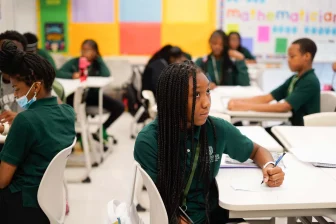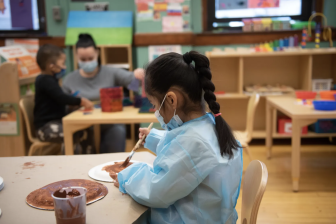
Listening to youth voices was missing in the COVID-19 pandemic response
The new school year has brought about another increase in COVID-19 cases.
As we face the future, it’s important to reflect on the past. Learning from how we weathered the pandemic can help improve our response to the ongoing presence of COVID-19 and the potential emergence of other diseases.
By examining youths’ experiences during the pandemic, especially the cycles of school closures and re-openings, we can shed light on policies and protocols during the COVID-19 response.
Government and school communication was a key part of the pandemic response. Based on research with youth about their experiences in the pandemic, we found that communication and meaningful discussions with youth were noticeably missing from this response.
We have an opportunity to improve how we support youths’ rights. An appropriate pandemic response requires more than promoting healthy habits to protect against infection. Youth voices need to be included and taken seriously on the matters that impact them.
The school context
School communities are key for delivering public health initiatives and connecting youth to mental-health resources, especially during recovery from disasters.
Research during the pandemic response highlighted both negative and positive experiences of school closures.
Some students expressed concerns about grades, school workload and loss of routine, yet some enjoyed a lighter school workload, having more time to spend with family, and for relaxation and hobbies or creative pursuits. Others experienced symptoms of anxiety, depression and loneliness, along with increases in family conflict and loss of important life milestones.
Youths’ rights
Article 12 of the United Nations Convention on the Rights of the Child states children have the right to have a voice in all matters that affect them.
Therefore, ensuring youth voices are a central focus of all policies, programs and research that targets them should be a priority.
In collaboration with a youth committee, who ensured the methods and interview guide would be relevant to youth experiences, we conducted research interviews. We asked youth participants about their daily lives during the pandemic, and their experiences of the cycles of school closures and re-openings and safety protocols.
We also asked them about changes to their mental health, and the availability of support during the pandemic. Lastly, we asked youth about the changes they hoped to see in the future and their recommendations for schools and policymakers.
Interviews with teens
We conducted 30 one-on-one interviews with secondary school students (spanning Grades 8-12) in Alberta, British Columbia, Ontario and Québec. We recruited participants through Instagram posts in English and French. Participants ranged in age from 13 to 18 years old. Sixteen participants self-identified as female and 14 as male. Fourteen students self-identified as white and 16 students self-identified in a variety of ways we coded as IBPOC (Indigenous, Black or a person of colour). The names of participants in the study were replaced with pseudonyms to protect participant anonymity.
Two of our main findings were focused on a lack of direct communication and engagement with youth in decision-making during the pandemic and the challenges youth faced in accessing appropriate mental-health support.
Lack of youth voice
Many students in the study discussed the results of sudden pandemic-related decisions (like virtual or in-person school learning mode) and how they were left out of the conversation.
Most students felt overlooked due to the lack of direct communication with them, which impacted students’ awareness and understanding of the protocols and policies that were necessary for their participation in school.
One Québec student, Jeanne, explained, “I would have loved to receive emails about school, the closures … I always had to ask my parents. Sometimes they don’t read the emails.”
Youth also stressed the lack of youth voice in pandemic-related decisions, particularly on school formats. Hamza, also from Québec, explained, “Usually, youths want to control everything and be part of the decision-making, but with COVID, it was different … we had to sit and listen to suggestions without being able to speak.”
Need for appropriate mental-health support
Unsurprisingly, most students in the study noted a decline in their mental health, regardless of whether they had mental-health concerns or diagnoses prior to the pandemic.
When asked if or how their pandemic experiences and subsequent lifestyle changes had impacted their mental health, students generally described feeling “frustrated,” “angry,” “overwhelmed,” “burnt out,” “hopeless” and “helpless.”
They also faced limitations to independence and faced challenges accessing appropriate mental-health support.
Drew, from Ontario, explained: “Nobody really helps … specifically with finding someone to help you out with [mental-health problems] … It’s not easy to find support.”
While some students in the study felt they had trusted adults (like teachers and parents) to whom they could talk to, others discussed concerns around: confidentiality in the school environment; a lack of knowledge of how or where to access support; limited school staff for mental-health support; and whether the available supports would be helpful.
Parents were discussed as potential barriers to services that students were aware of. Many students worried their parents would not approve of them accessing mental-health services, and some required parental support to access services (for example, for transportation or payments).
Meet youth where they’re at
The challenges that youth discussed are not restricted to the pandemic context. We can learn from these experiences by prioritizing the meaningful involvement of youth in decision-making processes.
Meaningful youth engagement can result in more relevant and effective policies, programs and services. Our findings emphasize the need to meet youth where they’re at, by providing them with accurate information in spaces they access most often (like social media or school contexts).
When we asked youth for their recommendations for adults, the overwhelming response was: talk to youth. As Rebecca from Alberta noted: If it’s a matter that is affecting us, it’s important that we have input on it.
This is also their right, and is protected in international law.![]()
Negin Riazi, Health Promotion Specialist – Knowledge Translation and Exchange, University of British Columbia; Jessica A. Goddard, PhD Student Investigating Child and Youth Mental Health, Brock University; Karen A. Patte, Canada Research Chair in Child Health Equity and Inclusion and Associate Professor, Department of Health Sciences, Brock University; Terrance J. Wade, Professor of Health Sciences, Brock University, and Valerie Michaelson, Assistant Professor, Department of Health Sciences, Brock University
This article is republished from The Conversation under a Creative Commons license. Read the original article.



